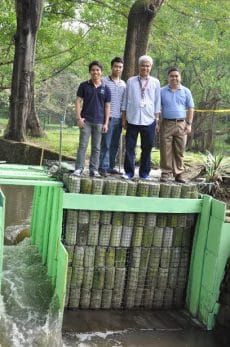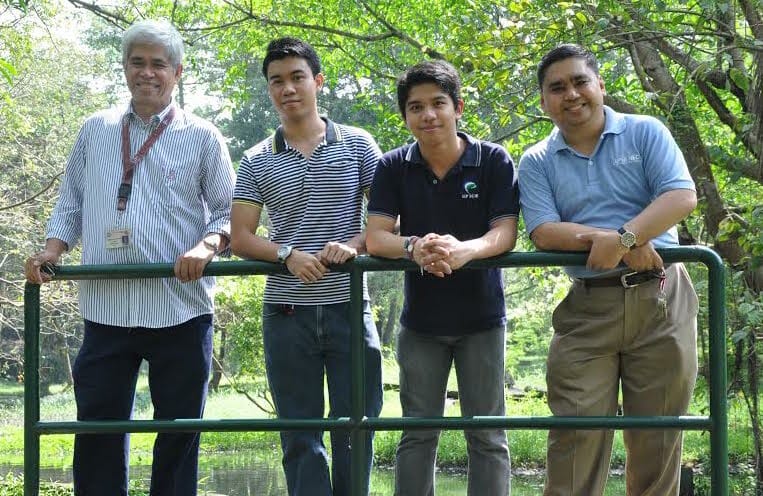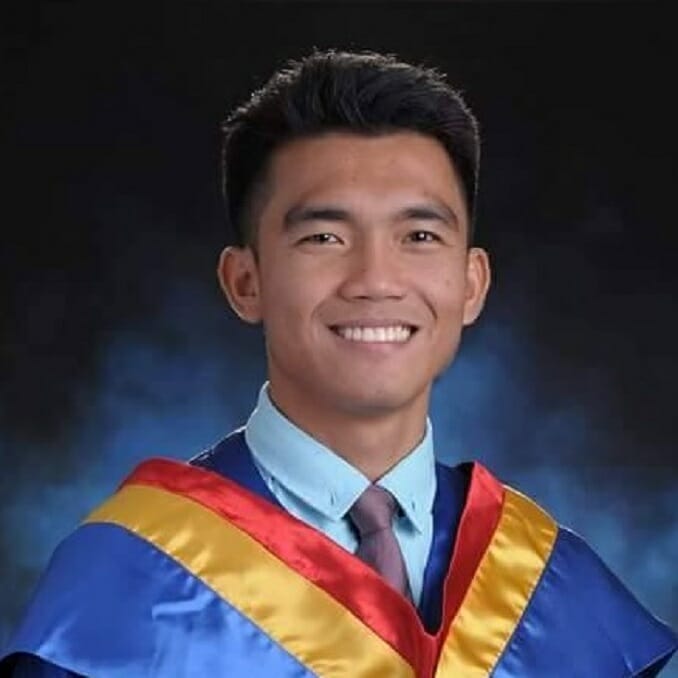A group of engineers in the Philippine based-company Aviscus, has developed the Gaia Dam, a small, low-cost and environment-friendly dam that serves primarily as an irrigation dam. The dam was also designed to be utilized in helping prevent extreme flooding due to heavy rains by re-routing the flow of surface water through the storm runoff pathway and swales present in the area. Another use of this dam is that it could help in the generation of hydroelectric power by diverting water into the intake structure, which will eventually reach the penstock and then into the turbine. GineersNow conducted an exclusive interview with Kent Renier Carandang, the CEO and President of Aviscus.
Kent Renier Carandang is a civil engineering graduate from the University of the Philippines Diliman, and has been working in the engineering industry for more than two years. He started working as a climate and flood consultant for the Philippine local government, and at the same time as a water resources engineering consultant. After a year, he joined a US based company in Guam that specializes in constructing structures and installations for the United States military.
THE COMPANY
GN: Tell us about your company. Describe your mission, vision, and values, where this company headed and what are your future expansion plans?
Carandang: Aviscus is an engineering and construction social enterprise operating in the Philippines, comprised of a small group of engineers and an architect. Our board of advisers is a mix of professionals from the fields of engineering, science, business, finance, and law and they add value and provide the needed advices for the growth and development of the company. Our mission is to create infrastructures with the highest level of quality from our design and construction services. Our vision, on the other hand, is to create a world where access to water, shelter, and electricity is affordable. Integrity, excellence, innovation, and accountability are the core values that we practice in our company.

How does your company define clean water and wastewater?
Carandang: Clean water is also known as potable or drinking water while wastewater is any water which has been affected by human actions such as farming, commercial, residential, industrial, etc.
How do people gain access to clean water? Do we have limited access to clean, drinkable water? Are we running out of it?
Carandang: According to the United Nations, 783 million people do not have access to clean water and considering the demand of the growing population, this number will tend to grow. Providing access to clean water and sanitation is one of the basic human rights recognized by the UN during its 2010 General Assembly which place the main responsibility to the governments. We can help people to gain access to clean water by building dams to store storm run-offs and surface water, recharging aquifers, putting up wastewater treatment plants and distributing it to off-grid areas.
Almost 900 million people have limited access to clean and drinkable water and the projected number of people that will be located in areas that has limited access to clean water shall rise to 3 billion if we are not going to act now. We are currently running out water supply but we can still turn the tide if we’ll have a concerted action and focus all efforts to innovate and tackle this problem as soon as possible.
THE MACRO LEVEL OF THE WORLD’S WATER TECHNOLOGY
 Where are we today? What is the current situation of clean water and wastewater (locally or globally)?
Where are we today? What is the current situation of clean water and wastewater (locally or globally)?
Carandang: There are numerous advancements in water technology today, however, these are mostly being developed in first-world countries. Sadly, development in the local water sector is slow and sporadic, and the start-ups are struggling to scale because people are not ready to accept changes or try a new technology.
What are the latest water technologies today? Where is water tech heading 20 years from now?
Carandang: The emerging water technologies today- aside from Gaia Dam- are focused on providing more affordable ways to treat wastewater, be it for domestic use or for farming use. Ranging from the usage of natural cleaning methods through solar technology up to the utilization of thin graphene sheets with a biomaterial that treats three kinds of bacteria in the water, such developments are very promising in the crusade to provide access to clean water to the poorest people.
Eventhough there are setbacks in the development of new water technologies, we believe that there is already an increasing interest towards its due to the pressing demand to clean water and the effects of climate change. Governments and private enterprises are looking for ways on how to manage the water resources of their countries because of the existing issues. Though progress is still slow, we can only strive and continue to pursue research and development.
THE MICRO LEVEL
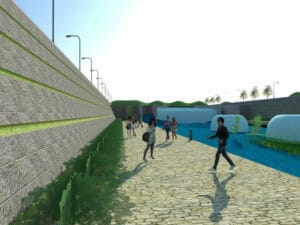
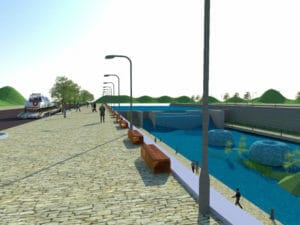
What are the initiatives / projects that you are doing (or have done) that will provide clean water to third world countries?
Carandang: I have co-invented the Gaia Dam – a low-cost dam that is environmental-friendly yet equally effective with its counterparts – which is being licensed by the University of the Philippines to our company (Aviscus Construction Corporation) in order to implement the technology in its projects. The dam’s core produces nutrients and enzymes which act as natural fertilizer and pesticides, thus, helping to produce organic crops.
What are the future innovations that you or your company is pursuing?
Carandang: In line with its promise to modernize its green engineering commitment, the company shall develop the water treatment capabilities of the dam’s core in order to treat polluted water that will pass through it and the wireless connectivity and communication of the chains of dams in order to smartly impound and store storm water for future usage.
Though our company is a new startup, we have already conducted initial talks with several government agencies for potential partnership and adoption of the technology in their future projects especially in the field of agriculture and disaster adaptation.
THE CHALLENGES & SOLUTIONS
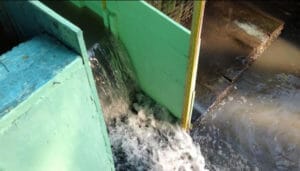
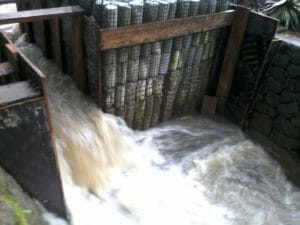
What are the greatest challenges in the water industry?
Carandang: The greatest challenge in the water industry aside from the adoption and scalability of the technology is the cost to distribute water to the poorest and underprivileged people. Majority, if not all, of the people who lack accesses to water are the ones who live below the poverty line. They do not have the means and financial capability to because aside from the skepticism of the government, private corporations, and NGOs of every country with introduction of new technology in their portfolio, they are also looking on the profitability of when they adopt it. I think that if we just allow ourselves to really focus on the problem and provide and implement solutions, we can truly achieve the change we want. By doing a whole system approach by utilizing, treating, and distributing water.
What do you think should the government, private companies and NGO of each country do to get rid of these? How do we provide water accessibility to more than 7 billion people?
Carandang: In order for us to provide water to more than 7 billion people across the world, we must first have the political will to implement stricter sanctions and penalties to people and organizations that fail to comply with environmental regulations which adversely affects our fresh water sources and also to prioritize projects and regulations that will enable the connectivity of the off-grid areas to the main distribution system. Lastly, we can also increase our supply by impounding and utilizing flood and surface water and by recharging aquifers.
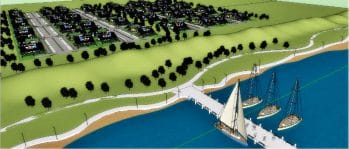
ADVICE TO THE YOUNG ENGINEERS
 Please give advice and words of wisdom about the clean water campaign to our young global audience. What would you like to tell to the millennials? Any inspiring words that you can share?
Please give advice and words of wisdom about the clean water campaign to our young global audience. What would you like to tell to the millennials? Any inspiring words that you can share?
Carandang: As we all know, humanity is standing in a threshold now and our generation will be the one to carry the burden of saving our planet. Still, we need to remember that no matter how deep the despair, hope always rises out of it. We are the new light of the world- the ones who’ll guide humanity to a promising future. For this very reason, no matter what your age, race, gender, or social status, we can help each other and make use of our knowledge, passion, and dedication so that together, we can make our world a better place especially to our brothers and sisters in need.
